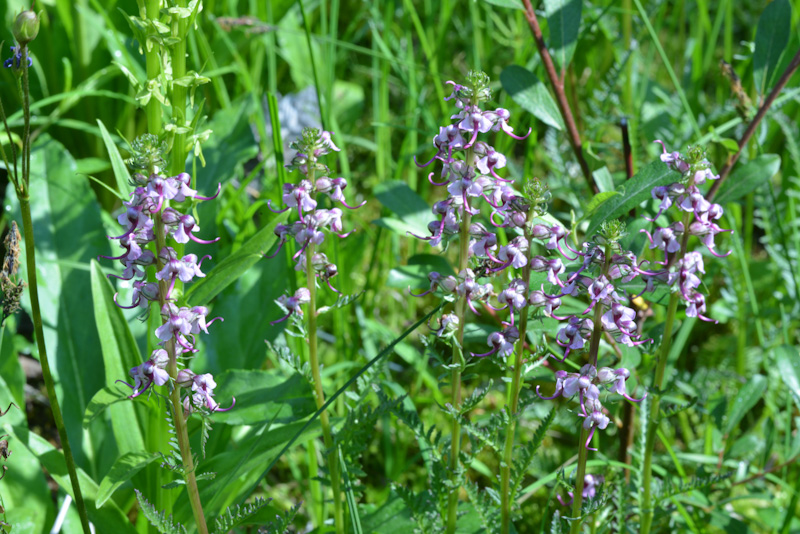
Photo and Commentary ©2024 by Robert Howson
Tuesday, September 24, 2024
It’s easy to see why certain common names are given. Take for example this Elephant Head, shown growing in a subalpine area along a stream. It doesn’t take too much imagination to see Dumbo portrayed among the petals. Other names are harder to justify. This species belongs to the genus Pedicularis, which is in Latin a reference meaning louse. From that we get the common name “lousewort”, a name derived from an ancient belief that when cattle ingested the plant they became infested with lice.
The family name too has a strange connection. Elephant Head belongs to the family we refer to as Broomrape, a reference to a plant that is parasitic on broom. This is accomplished by way of a haustorium, a portion of the root that penetrates the tissue of the host plant to draw nutrients from it as is also the case with mistletoe.
We might be tempted to conclude with names like that, the subjects were doomed. But consider the case of two of Hosea’s children. Playing their parts in a living parable, the daughter was named Lo-Ruhamah meaning “unloved”, followed by a son named Lo-Ammi which means “Not-my-people and I am not your God”. With names like that it might be assumed they were doomed for failure. But fortunately the verse continues and implies the boy’s name was changed to “children of the living God”. (Hosea 1:6-10) That’s good news for us; change is possible, even if you’re thought of as being an elephant head.
